When Wetherspoon’s chairman, Tim Martin, opened his first pub in north London, in 1979, he named it Wetherspoons, after a Mr Wetherspoon – his teacher at primary school in New Zealand. The reasoning behind the name is that Mr Wetherspoon was too nice to be running Tim’s particular class and couldn’t control it; Tim thought to himself that, likewise, he couldn’t control his first pub, so considered the name to be appropriate.
Framed photographs and text about Leeds City Station.
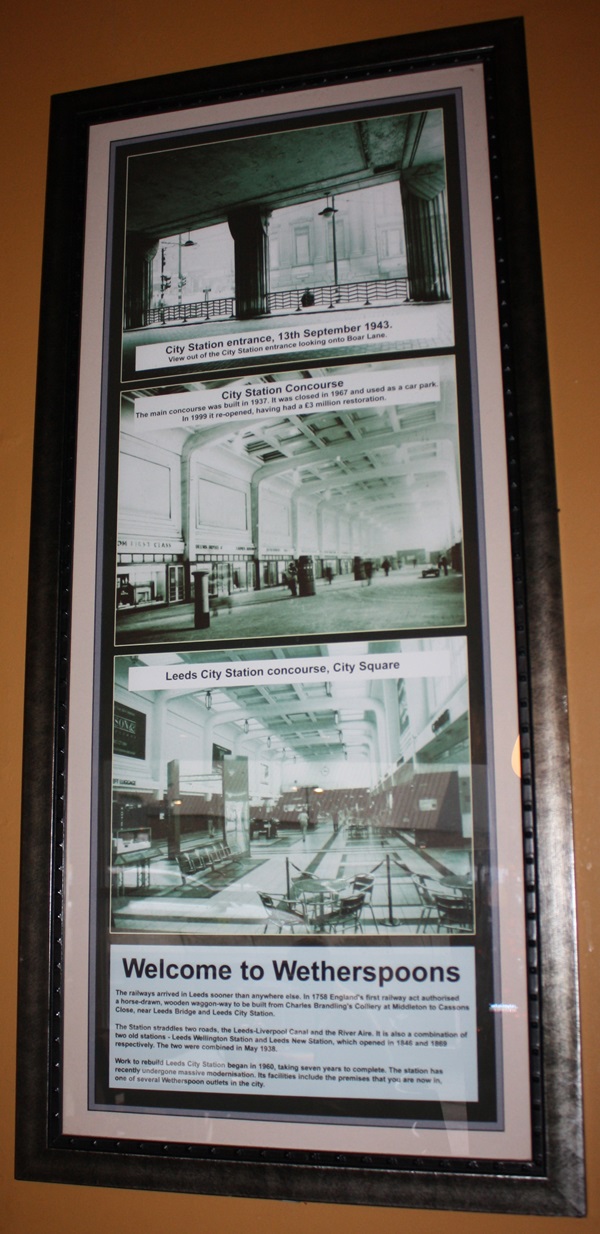
The text reads: The railways arrived in Leeds sooner than anywhere else. In 1758 England’s first railway act authorised a horse-drawn, wooden waggon-way to be built from Charles Brandling’s Colliery at Middleton to Cassons Close, near Leeds Bridge and Leeds City Station.
The Station straddles two roads, the Leeds-Liverpool Canal and the River Aire. It is also a combination of two old stations – Leeds Wellington Station and Leeds new Station, which opened in 1846 and 1869 respectively. The two were combined in May 1938.
Work to rebuild Leeds City Station began in 1960, taking several years to complete. The station has recently undergone massive modernisation. Its facilities include the premises that you are now in, one of several Wetherspoon outlets in the city.
Top: City Station entrance, 13th September 1943. View out of the City Station entrance looking onto Boar Lane.
Middle: City Station concourse. The main concourse was built in 1937. It was closed in 1967 and used as a car park. In 1999 it re-opened, having had a £3 million restoration.
Bottom: Leeds City Station concourse, City Square.
Framed photograph, painting and text about City Museum and the first Leeds infirmary.
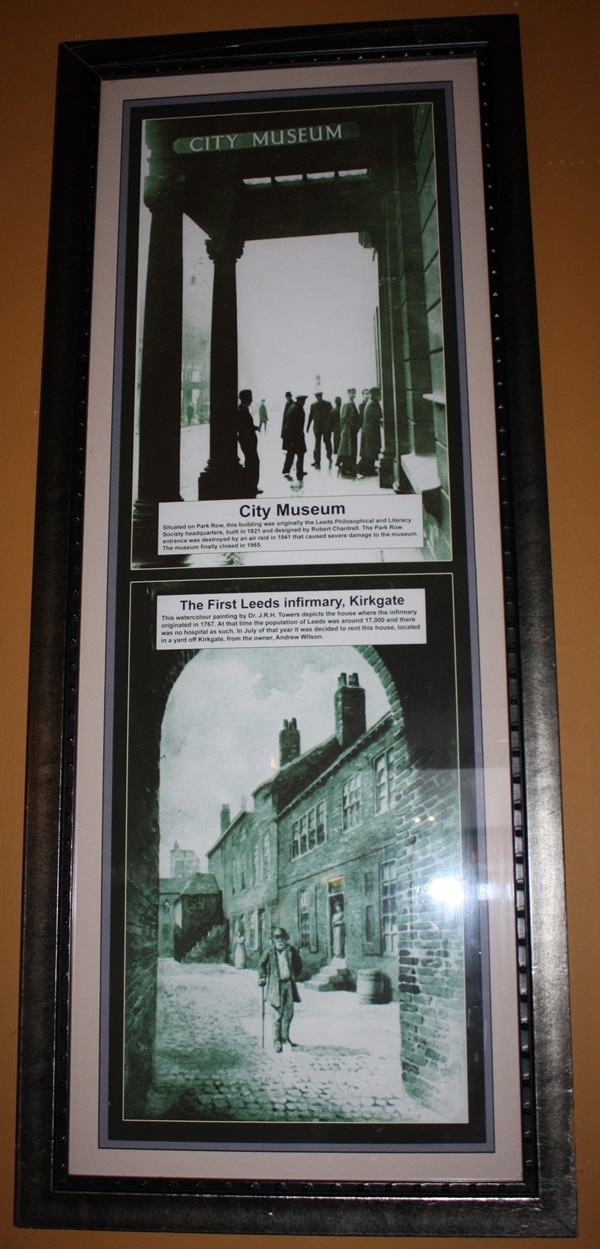
The text reads: Situated on Park Row, this building was originally the Leeds Philosophical and Literacy Society headquarters, built in 1821 and designed by Robert Chantrell. The Park Row entrance was destroyed by an air raid in 1941 that caused severe damage to the museum. The museum finally closed in 1965.
This watercolour painting by Dr J.R.H. Towers depicts the house where the infirmary originated in 1767. At that time the population of Leeds was around 17,000 and there was no hospital as such. In July of that year it was decided to rent this house, located in a yard of Kirkgate, from the owner, Andrew Wilson.
Framed photographs about the British railways in 1966.
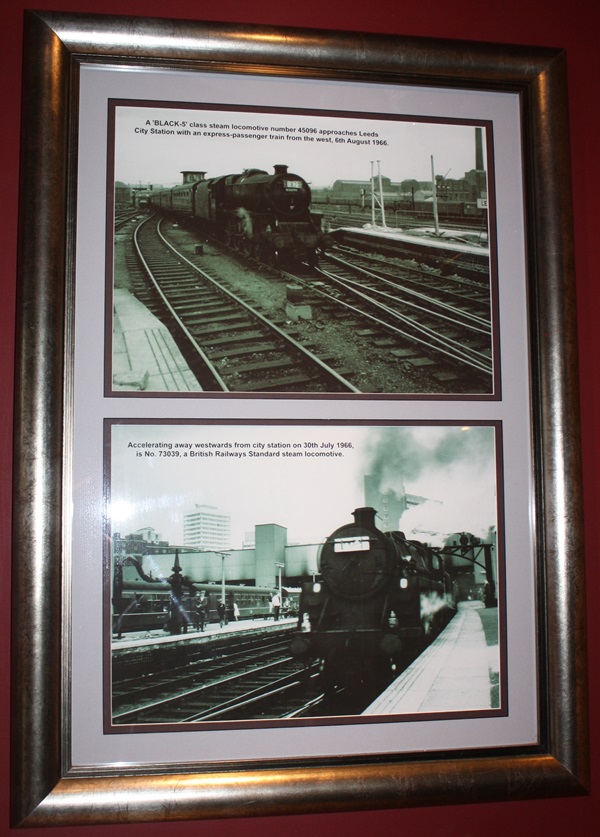
Above: A ‘BLACK-5’ class steam locomotive number 45096 approaches Leeds City Station with an express-passenger train from the west, 6th August 1966.
Below: Accelerating away westwards from city station on 30th July 1966, is No. 73039, a British Railways Standard steam locomotive.
A piece of art entitled ICONISMIS I/II/III. Created on 3/3/2000 by Matt Ruttimann.
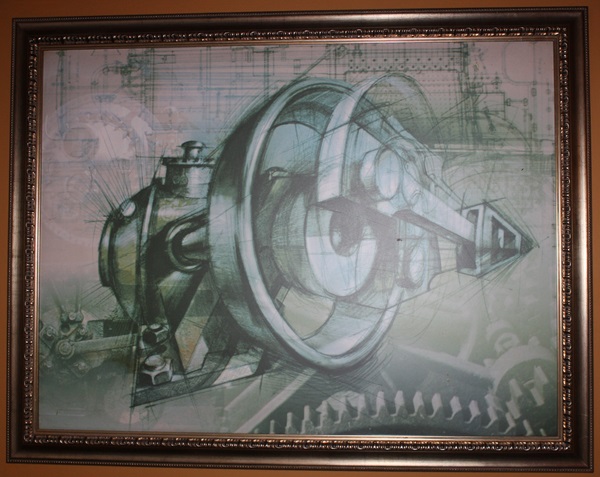
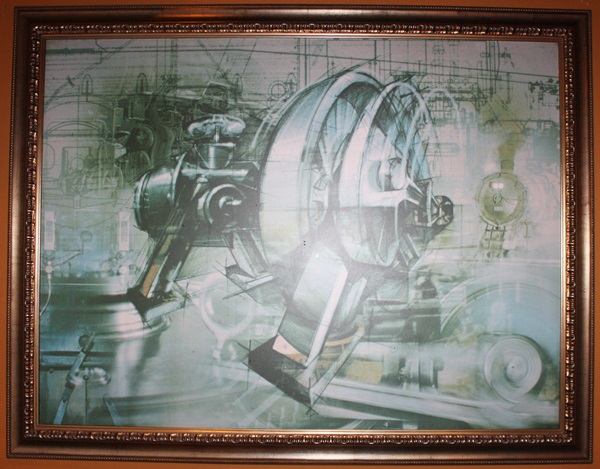
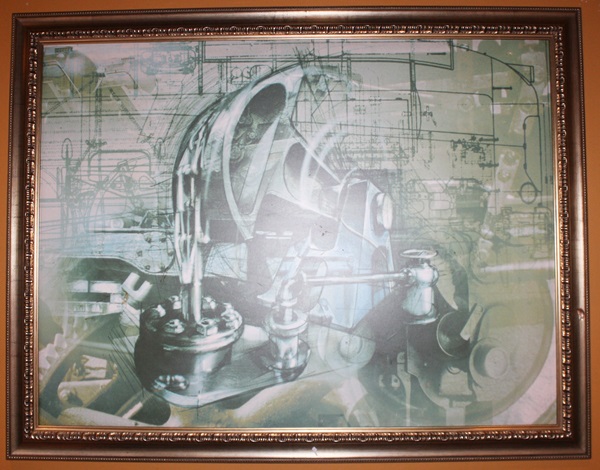
External photograph of the building – main station entrance.
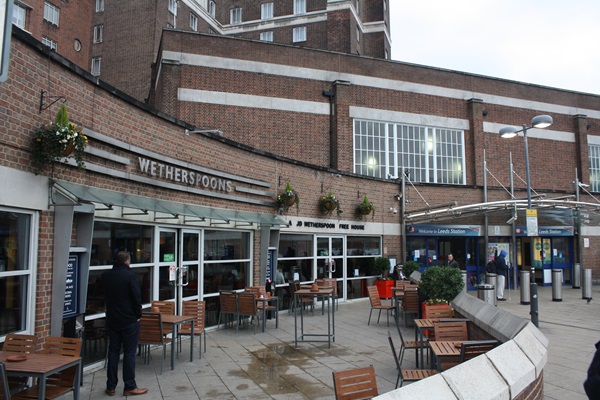
If you have information on the history of this pub, then we’d like you to share it with us. Please e-mail all information to: pubhistories@jdwetherspoon.co.uk